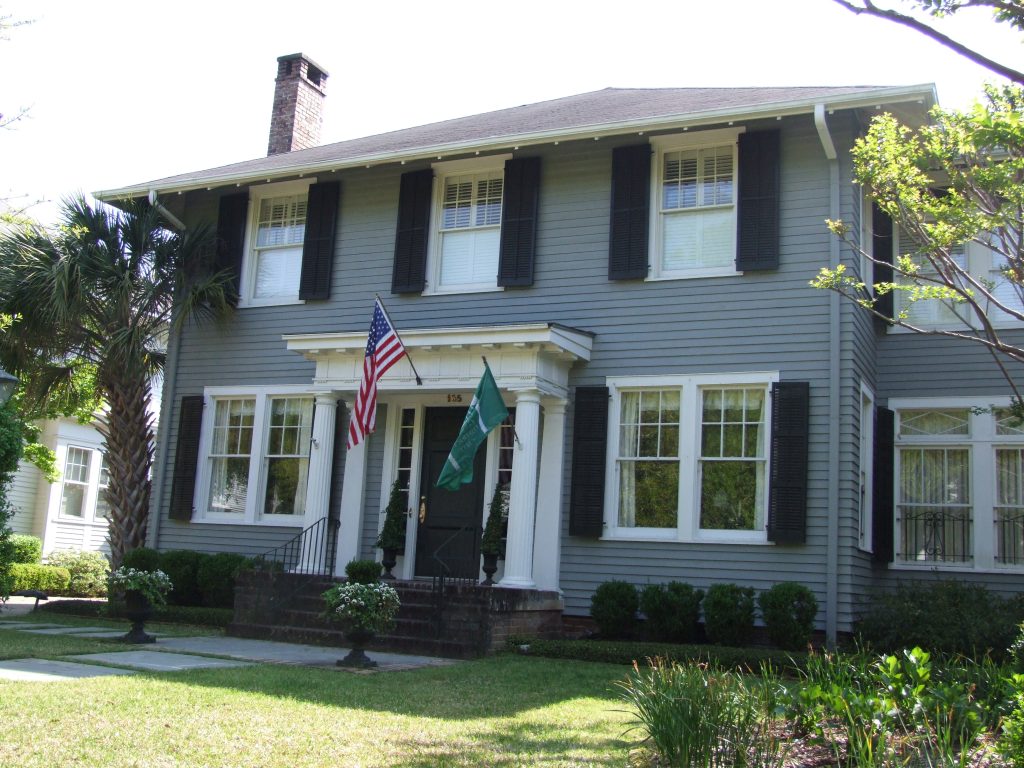I completed my tour of Alabama with an overnight stay in the coastal city of Mobile, which perfectly blends southern charm and elegance with the lively atmosphere of a major industrial port. Situated at the mouth of the Mobile River, where it meets the Gulf of Mexico, Mobile has a rich history as the first capital of colonial French Louisiana, established in 1702. The city’s name is derived from the Native American Mobilian tribe that once settled the area. Over the next century, Mobile passed between French, British, and Spanish rule, each leaving its own distinct cultural imprint, shaping the city’s unique character today.
A Rich Carnival Tradition Mobile is not only steeped in history but also boasts a vibrant cultural scene. Though many associate Mardi Gras with New Orleans, it’s Mobile that holds the distinction of being the first city in North America to celebrate Carnival. Mobile’s Mardi Gras festivities date back to 1703, predating New Orleans by over a decade. The city’s residents mark the season leading up to Lent with elaborate balls, parties, and parades. Carnival often stretches from November or December through February, bringing the city alive with colour and energy.
While the tradition culminates on Fat Tuesday, the day before Ash Wednesday, the lead-up is filled with excitement. Instead of the low-key pancake feasts favoured by Brits, the people of Mobile embrace their traditions with revelry, transforming the streets into a festive spectacle for months on end.

Mobile’s Carnival Museum No visit to Mobile would be complete without diving into its Mardi Gras history, and the Mobile Carnival Museum offers just that. Located in a historic mansion, the museum itself is a stunning piece of architecture, but its interior is what truly shines. I initially had reservations about the museum, but it exceeded my expectations with an impressive collection of vibrant costumes, crowns, and floats, alongside a detailed timeline chronicling the origins and evolution of Mardi Gras in Mobile. With affordable entry fees ($10 for adults and $5 for children, updated as of 2024), it’s a must-see for anyone interested in the cultural roots of Mardi Gras. Be sure to check the museum’s website for hours, as they can vary seasonally.

Battleship Memorial Park Just a short drive from downtown Mobile is Battleship Memorial Park, home to the legendary USS Alabama. This World War II battleship now serves as a floating museum, allowing visitors to explore the ship and imagine what life was like for the sailors who lived and fought aboard in its cramped quarters. In addition to the USS Alabama, the park also features the submarine USS Drum and a collection of military aircraft and vehicles, providing a thorough insight into the naval and military history of the United States. Admission is still a reasonable $15 for adults and $6 for children, making it a family-friendly destination. Open daily except Christmas, it’s a fascinating stop for history buffs.

Historic Homes of Mobile Driving through Mobile’s backstreets offers glimpses of the city’s beautiful Antebellum homes, which are iconic features of the Deep South. While some of these homes show signs of age, many have been lovingly preserved. One of the standout examples is Oakleigh House, a Greek Revival-style mansion built in the 1830s. Today, Oakleigh is open to the public, showcasing its history through exhibits on life in the 19th century. The tour provides an intimate look at both the grandeur and the everyday challenges faced by those who lived during that era. For visitors with more time, exploring Mobile’s historic district is an enriching detour.

Nightlife in Mobile True to its Carnival roots, Mobile’s nightlife scene is vibrant, lively, and a bit more down-to-earth than the glitzier cities along the Gulf Coast. Dauphin Street is the heart of the city’s after-dark entertainment, where you can find an array of bars, restaurants, and live music venues. The area’s relaxed, youthful vibe makes it a great spot to unwind with locals and visitors alike. Whether you’re grabbing a casual drink or enjoying some live jazz, Dauphin Street pulses with energy, offering a glimpse of Mobile’s spirited culture.
Final Thoughts on Mobile Although Mobile is often overlooked for bigger cities like New Orleans, it’s a city that deserves its moment in the spotlight—especially during Carnival season. While a brief visit is enough to experience its key attractions, I’d love to return during Mardi Gras, when Mobile truly comes into its own, embracing its role as the original home of this festive tradition. The mix of history, culture, and coastal charm makes Mobile a hidden gem along the Gulf of Mexico, and it’s certainly worth a stop on any tour through Alabama.
For more information visit – https://www.mobile.org/
Other Alabama stories

